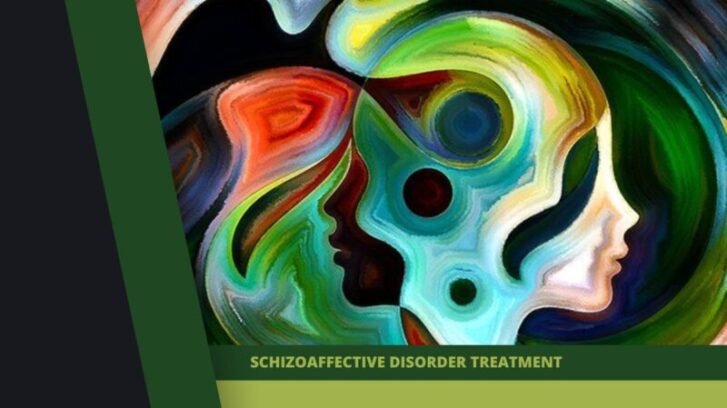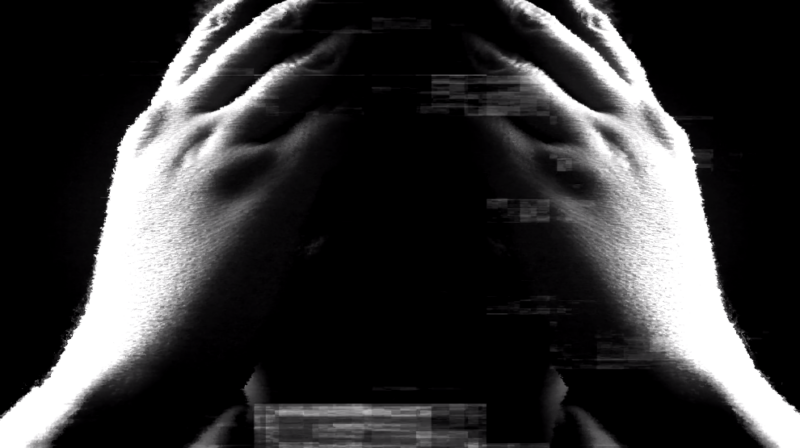Life is a complex, ever-changing landscape, full of challenges and surprises. But imagine if you had to navigate it with a kaleidoscope of symptoms ranging from mood swings to hallucinations. This is the reality for individuals dealing with Schizoaffective Disorder. Recognizing the importance of early diagnosis and treatment is the first step towards understanding and managing this condition.
Before discussing the treatment, understanding the types of schizoaffective disorders can help you determine which treatment is for you.
Let’s delve into this unique and demystify its complexities.
Symptoms and Diagnostic Criteria
This is a mental health condition that manifests as a blend of symptoms typically seen in schizophrenia, such as hallucinations or delusions, and mood symptoms, like mania or depression. It is not merely the presence of these symptoms that determine a diagnosis, but their unique co-occurrence and duration. This dual nature often makes diagnosis challenging and requires a comprehensive psychiatric evaluation.
- Psychotic symptoms may include:
- Hallucinations: Seeing, hearing, or feeling things that aren’t there.
- Delusions: Strong beliefs not based in reality.
- Disorganized thinking: Difficulty concentrating or following a conversation.
- Mood symptoms may include:
- Mania: Periods of high energy, reduced need for sleep, and increased activity.
- Depression: Persistent feelings of sadness, hopelessness, and loss of interest in activities once enjoyed.
- The diagnosis requires:
- The presence of at least one major depressive, manic, or mixed episode.
- Psychotic symptoms that occur without mood symptoms for at least two weeks.
- Symptoms that are not due to the effects of a substance or another medical condition.
Differentiating Schizoaffective Disorder from Similar Conditions
What sets apart from similar conditions such as Bipolar or Schizophrenia? It’s the simultaneous presence of distinct symptomatic episodes that characterizes this disorder. While bipolar may present mood swings with periods of psychosis, and schizophrenia involves persistent psychosis, Schizoaffective Disorder uniquely features consistent psychotic symptoms alongside mood disorder episodes. Understanding this distinction is crucial for accurate diagnosis and treatment.
Causes and Risk Factors of Schizoaffective Disorder
Although the exact cause of Schizoaffective Disorder remains unknown, it is generally believed to be a result of a complex interplay between genetic, environmental, and psychological factors. Research shows that individuals with a family history of mood disorders or schizophrenia are more likely to develop this condition.
- Genetic factors: The risk increases if a close family member has Schizoaffective Disorder, schizophrenia, or a mood disorder.
- Environmental factors: Stressful events, such as the loss of a loved one or high levels of stress, may trigger symptoms in people who are susceptible to the disorder.
- Brain chemistry and structure: Brain scans are revealing differences in those with it. These differences, along with imbalances in brain chemicals (neurotransmitters), may contribute to the disorder.
- Drug use: Use of psychoactive drugs can trigger or worsen symptoms.
Current research is continually uncovering new layers of understanding about Schizoaffective Disorder. Recent findings suggest potential biological markers and genetic predispositions, while ongoing studies investigate the role of neurodevelopmental factors and the influence of environmental stressors.
Challenges in Treating
Due to its unique nature, treating Schizoaffective Disorder can be complex. It’s like trying to put together a puzzle without knowing the final picture. Professionals must address the dual nature of symptoms – psychotic symptoms reminiscent of schizophrenia and mood symptoms in line with bipolar disorder or major depressive disorder. A multidimensional treatment approach is typically necessary to ensure comprehensive care.
Stigma Associated with Mental Health Treatment
As with many mental health conditions, stigma can significantly impede the treatment of Schizoaffective Disorder. Misunderstandings about the disorder often lead to marginalization, creating a barrier to seeking treatment. Addressing these stigmas is a necessary part of effective treatment, both at the societal level and in the therapy room.
Pharmacological Interventions
Pharmacological treatment plays a crucial role in managing Schizoaffective Disorder. Antipsychotics help manage hallucinations, delusions, and other psychotic symptoms. Mood stabilizers and antidepressants address depressive or manic episodes. It’s a careful balancing act, tailored to the individual’s specific symptom profile.
Benefits and Potential Side Effects
While these medications can significantly enhance quality of life, they may also come with potential side effects. These can range from minor discomforts like dry mouth and weight gain to more severe implications such as movement disorders or cardiovascular issues. Regular consultation with healthcare professionals can ensure these effects are managed and minimized.
Psychotherapy and Psychosocial Treatments
Psychotherapy is an indispensable component of treatment. Cognitive Behavioral Therapy (CBT) can help patients understand and change thought patterns leading to problematic behaviors or emotional discomfort. Group therapy offers an environment to share experiences and coping strategies, while family therapy educates and involves loved ones in the treatment process.
Role of Psychoeducation in Managing the Disorder
Understanding one’s condition is a powerful tool in mental health treatment. Psychoeducation provides this understanding, offering insights into symptoms, treatment options, and strategies for managing the disorder. This knowledge can help individuals regain control over their lives, fostering hope and resilience.
Lifestyle Modifications and Self-Care Strategies
While medications and psychotherapy form the backbone of treatment for Schizoaffective Disorder, lifestyle modifications play a significant supplementary role. Regular exercise, a balanced diet, and sufficient sleep can considerably enhance the effectiveness of traditional treatments. Think of it as a holistic triad that supports mental and physical well-being.
Managing stress is critical in handling Schizoaffective Disorder. Techniques such as mindfulness, meditation, and yoga can help reduce stress and promote mental calmness. Alongside these, maintaining regular follow-ups with healthcare providers can act as a preventive measure against relapse.
Role of Caregivers and Family in the Treatment Process
Support from loved ones can make a world of difference in managing Schizoaffective Disorder. Caregivers can help by being empathetic listeners, advocating for their loved ones’ needs, and maintaining a stable, low-stress home environment. It’s not an easy journey, but shared strength can go a long way.
- Empathetic Listening: Show understanding by acknowledging their feelings and experiences without judgment.
- Advocacy: Stand up for their needs in healthcare settings, social situations, and other contexts.
- Stable Environment: Create a home environment that is calm, predictable, and supportive.
Family education is a crucial aspect of the treatment process. By understanding the disorder, family members can provide better support and care. Moreover, they can help combat the stigma associated with the condition, foster open conversations, and encourage adherence to treatment plans.
- Understanding the Disorder: Learn about symptoms, treatments, and management strategies.
- Combating Stigma: Challenge misconceptions and stereotypes about the disorder within and outside the family.
- Encouraging Treatment Adherence: Encourage and support the family member in following their treatment plan.
Role of Peer Support
Often, the most profound understanding comes from those who’ve walked the path themselves. Peer support, in the form of support groups or peer counseling, offers an environment of shared experiences, mutual understanding, and non-judgmental support that can be tremendously beneficial for those living with Schizoaffective Disorder.
Peer support also provides an avenue to share experiences and coping strategies, offering practical insights from those who’ve been there. These shared narratives can provide a sense of community, reduce feelings of isolation, and provide real-world coping strategies.
Navigating the Healthcare System
Choosing the right healthcare provider is paramount to receiving effective treatment for Schizoaffective Disorder. Look for professionals experienced in treating this specific disorder. Don’t hesitate to ask questions and ensure you feel comfortable discussing your concerns with them. Remember, this is a partnership journey towards your well-being.
Understanding your rights and responsibilities as a patient can empower you in your treatment journey. You have the right to respectful care, to be informed about your treatment, and to privacy and confidentiality. Simultaneously, you have the responsibility to be active in your care, to provide accurate health information, and adhere to the agreed-upon treatment plan.
The Future Treatment
The landscape of Schizoaffective Disorder treatment is continually evolving. Emerging treatments like transcranial magnetic stimulation (TMS) and advancements in pharmacotherapy show promising potential. Additionally, the rise of telepsychiatry has made treatment more accessible than ever.
Recent research and clinical trials continue to shed light on the intricate workings of Schizoaffective Disorder. By understanding underlying biological mechanisms better, we can aspire to develop more targeted and effective treatments. The future looks promising, with each new discovery bringing us one step closer to a breakthrough.
Conclusion
Living with Schizoaffective Disorder can be challenging, but remember, it’s not an insurmountable hurdle. With comprehensive treatment encompassing medication, psychotherapy, lifestyle modifications, and support from loved ones and peers, managing this disorder is entirely possible.
To everyone living with Schizoaffective Disorder and their families – your strength is immense, your resilience admirable. There will be tough days, but remember, every step forward, no matter how small, is progress. There’s a community here to support you and advancements in treatment on the horizon. Your journey matters, and your well-being is worth fighting for.
Related Posts:
- Women Mental Health and Anxiety: Breaking the…
- Breaking Down Mental Health Barriers: The Federal Response
- Types of Schizoaffective Disorder and Treatment…
- How Does Family Life Affect Mental Health? Building…
- How to Speak to Your Employer about Mental Illness:…
- The Psychology of Letting Go: Breaking Chains!
















